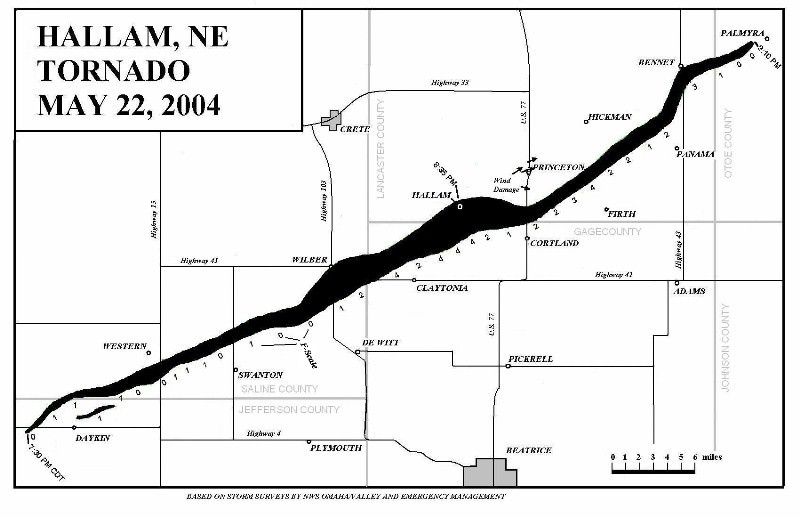Determining the biggest tornado can be a tricky endeavor. First of all, there is no direct absolute way to measure the width of a tornado. There is also the fact that a tornado can be ranked by many factors such as wind speed, level of destruction caused, drop in barometric pressure, or the length of travel path. Each of these play a role in determining the overall power of a tornado.
Another problem is that in many cases like in the Tornado Alley of the Midwestern United States, a storm system often produces multiple tornadoes. This can make it difficult to measure an individual tornado since it destructive force is combined with that of other tornadoes spawned by the same storm system.
While there is no definitive method there are some records that can give us a general idea about some of the greatest tornadoes in recorded history. The most powerful tornadoes tend to be in the United States, but there are others that can compete in other parts of the world.
The title of most devastating tornado goes to the Tri-State tornado of 1925. The twister traveled through three states and killed 698 people. This makes it the deadliest tornado in US history. It also had the longest track and duration traveling a distance of over 200 miles and lasting 3.5 hours. Even then this is just for the United States. The deadliest tornado in the world occurred in 1989 in Bangladesh taking over 1300 lives.
The closest measure to the Biggest tornado would be the widest damage path. This the with of the destruction a tornado causes not it actual size. This measure is a good estimate for the actual width of the tornado’s funnel cloud. The storm that holds the record occurred in Wilber-Halland Nebraska. The tornado had a destruction path with a width of over two miles. The tornado destroyed most of the buildings in the area.
As you can see you define the largest tornado by many factors. This just shows the various ways in which we as casual observers can measure and determine the power of a tornado. This provides an interesting insight into what makes a tornado so destructive and hard to predict. It is also important to remember once again that tornadoes rarely occur as singular phenomenons. A group of smaller tornadoes in an outbreak can be as effectively powerful and destructive as one major tornado.
If you enjoyed this article there are other pieces on Universe Today that you will loved to read. There is an interesting article about the winds on Venus. There is also another interesting article on Global warming.
You can also check out resources online. There is a great article about Tornadoes on National Oceanic and Atmospheric Administration website There is another interesting piece on tornadoes on the University Corporation for Atmospheric Research website.
You can also check out Astronomy Cast. Episode 151 talks about atmospheres.

